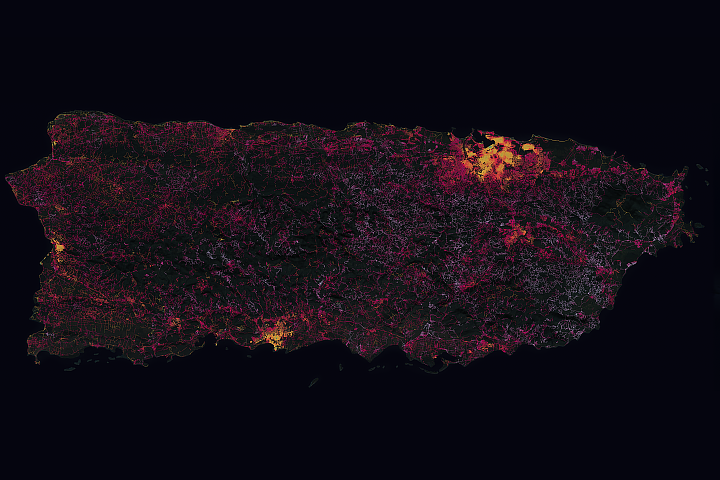
Segue abaixo interessante matéria sobre as condições climáticas e limnológicas da época em que Jesus "andou sobre o Mar da Galiléia", atual Lago Kinneret em Israel.
Temperaturas menores nos tempos bíblicos, associadas à chuva primaveril após o congelamento do "mar" (um lago, no caso) no finalzinho do inverno e sua alta densidade (maior salinidade em clima árido), permitiriam a visão de uma superfície líquida, na qual era possível ficar sobre a mesma tendo gelo logo abaixo.
Regozijai-vos!
a.h
Is There a Paleolimnological Explanation for ‘Walking on Water’ in the Sea of Galilee?
Journal
Journal of Paleolimnology
Publisher
Springer Netherlands
ISSN
0921-2728 (Print) 1573-0417 (Online)
Issue
Volume 35, Number 3 / April, 2006
DOI
10.1007/s10933-005-1996-1
Pages
417-439
Subject Collection
Earth and Environmental Science
SpringerLink Date
Friday, March 17, 2006
Doron Nof1, 2 , Ian McKeague3, 4 and Nathan Paldor5
(1)
Department of Oceanography, Florida State University, Tauahassee, FL, 32303, U.S.A.
(2)
Geophysical Fluid Dynamics Institute, Florida State University, Tauahassee, FL, 32303, U.S.A.
(3)
Department of Statistics, Florida State University, U.S.A.
(4)
Present address: Department of Biostatistics, Columbia University, U.S.A.
(5)
Department of Atmospheric Science, The Hebrew University of Jerusalem, Israel
Received: 13 April 2005 Accepted: 01 August 2005
Abstract Lake Kinneret (the Sea of Galilee) is a small freshwater lake (148 km2 and a mean depth of 20 m) situated in northern Israel. Throughout recent history there have been no known records of a total ice formation on its top. Furthermore, given that convection requires an initial cooling of the entire lake down to 4 °C, it is difficult to imagine how such a low-latitude lake, presently subject to two-digit temperatures during the winter, could ever freeze. Lake Kinneret is, however, unique in the sense that there are dense (warm and salty) springs along its western shore. The dynamics of the regions adjacent to these springs are investigated using a one-dimensional nonlinear analytical ice model, a paleoceanographic record of the sea surface temperature of the Mediterranean Sea, and a statistical model. We show that, because the water directly above the plume created by the salty springs does not convect when it is cooled down to 4 °C, freezing of the region directly above the salty springs was possible during periods when the climate in the region was somewhat cooler than it is today. We refer to this localized freezing situation as ‘springs ice’.
The analytical ice-model involves a slowly varying approach where the ice is part of a thin fresh and cold layer floating on top of the salty and warm spring water below. During the ice formation process, the ice is cooled by the atmosphere above and warmed by the spring water below. The plumes created by the springs have a length scale of 30 m, and it is argued that, during the Younger Dryas when the air temperature in the region was probably 7 °C or more cooler than today, ‘springs ice’ (thick enough to support human weight) was formed once every 27 years or less. During the cold events 1500 and 2500 years ago (when the atmospheric temperature was 3 °C or more lower than today) springs ice occurred about once in 160 years or less. Since the duration of these cold events is of the same order as the springs ice recurrence time, there is a substantial chance that at least one springs ice occurred during these cooler periods. With today's climate, the likelihood of a springs ice is virtually zero (i.e., once in more than 10,000 years).
One set of those springs associated with the freezing is situated in Tabgha, an area where many archeological features associated with Jesus Christ have been found. On this basis, it is proposed that the unusual local freezing process might have provided an origin to the story that Christ walked on water. Since the springs ice is relatively small, a person standing or walking on it may appear to an observer situated some distance away to be ‘walking on water’. This is particularly true if it rained after the ice was formed (because rain smoothes out the ice’s surface). Whether this happened or not is an issue for religion scholars, archeologists, anthropologists, and believers to decide on. As natural scientists, we merely point out that unique freezing processes probably happened in that region several times during the last 12,000 years.
Keywords ‘Walking on water’ - Air–lake interaction - Convection - Lake freezing - Salty springs
Doron Nof
Email: http://mail1.uol.com.br/cgi-bin/webmail.exe?Act_V_Compo=1&mailto=nof@ocean.fsu.edu&ID=IuVOUp7XArdMVD3qN5AUx7iHR2Nmo9Q4vD1WIP&R_Folder=b3V0Ym94&msgID=126&Body=0
Fonte no site da Editora Springer.














3 comments:
um pouco esquisito
pelo que eu saiba, o mar da galiléia não é salgado (pesca-se peixes de água doce por lá, e as pessoas bebem de sua água), e sim o mar morto, que é abastecido pelas águas do primeiro através do rio jordão e empoça em um grande vale e sofre uma grande evaporação, e por isso é extremamente denso. mesmo assim, a água muito salgada congela a temperaturas bem abaixo de zero e embora permita que um homem bóie, não consigo imaginar alguém caminhando sobre ela, principalmente porque a pressão exercida por um corpo sobre outro tem relação com a área de contato, por isso suportamos uma mulher deitada sobre nós mais facilmente do que caminhando sobre nós. o peso de um homem concentrado na área das plantas dos pés cria uma pressão tal que o faz afundar até encontrar o equilíbrio, com a água nas coxas, por exemplo (foi o que aconteceu comigo no mar morto), quando o empuxo ajuda a estabilizá-lo. e isso imagino que aconteceria até com uma mistura pastosa de 50% de água 50% de sal. e acho que para congelar um mar extremamente salgado seria necessário que a temperatura ambiente estivesse abaixo dos vinte graus negativos. eu estive naquela região durante o inverno e ela girava em torno a zero, cinco negativos...
mas este é apenas o meu palpite após ler o texto bem por alto
quem sou eu para questionar cientistas? he he
abs
enganei-me com a palavra "empuxo"
substitua-a por pressão contrária
abs
Bem, também não sou da área, mas pelo que entendi, o estudo se pauta nas prospecções de como deveria ser o clima regional cerca de 2500 anos atrás (3oC mais frio, na média). Sendo assim, a aridez também seria maior. Mais árido, maior a evaporação sem tanta pluviosidade, logo será maior a salinidade.
Quanto a andar na água, está dito que não é o caso, mas andar sobre uma película de água sobre o gelo formado, o que causaria uma "miragem" de um possível passeio sobre o líquido sem se vislumbrar o sólido abaixo.
Post a Comment